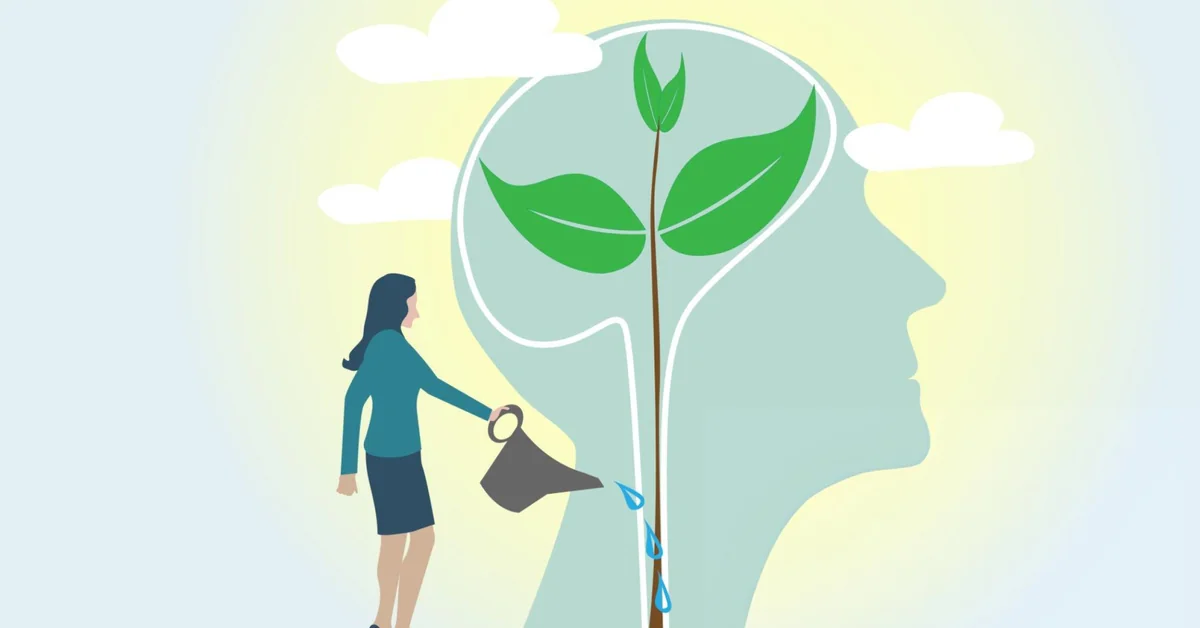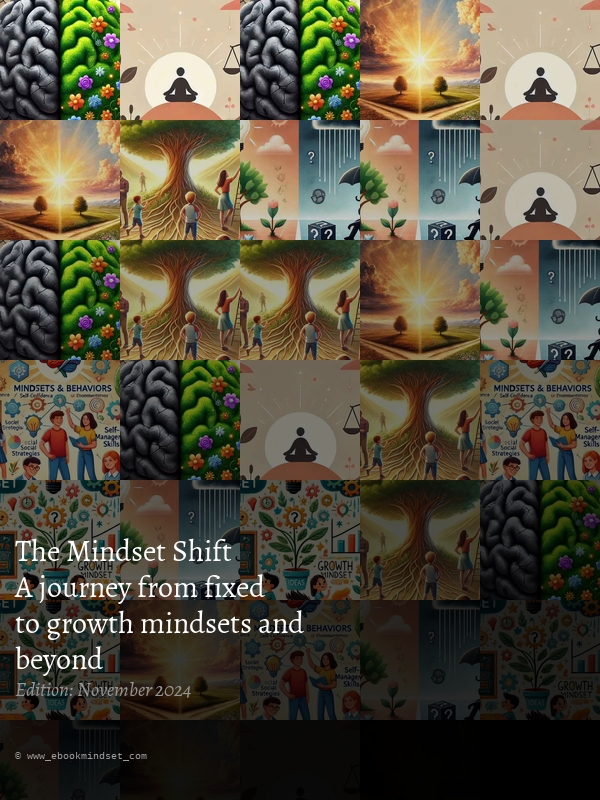Understanding Growth Mindset in the Workplace
A growth mindset, popularized by psychologist Carol Dweck, is the belief that abilities and intelligence can be developed through dedication and hard work. This fosters a love of learning, resilience, and a willingness to embrace feedback. In the workplace, a growth mindset significantly impacts individual performance, team dynamics, and overall organizational success. This article explores growth mindset examples at work, showing how employees and leaders can embody this philosophy for personal and professional growth. It delves into the contrast between a growth mindset and a fixed mindset, outlining strategies for cultivating a growth mindset within organizations, and exploring the benefits of embracing this crucial philosophy for both individual and organizational success.
The Importance of a Growth Mindset
Benefits of a Growth Mindset
The advantages of cultivating a growth mindset in the workplace are numerous and far-reaching. It impacts not only individual performance but also the overall culture and success of the organization. Here are some key benefits:
- Enhanced Learning: Employees with a growth mindset view challenges as invaluable learning opportunities. They actively seek out new knowledge and skills, understanding that setbacks are part of the learning process. This proactive approach to learning leads to continuous improvement and increased competence.
- Increased Resilience: Individuals with a growth mindset are more resilient in the face of setbacks. Instead of viewing failures as evidence of incompetence, they see them as stepping stones towards improvement. They learn from their mistakes, adapt their strategies, and persevere in the face of adversity. This resilience is crucial in navigating the challenges inherent in any work environment.
- Improved Collaboration: A growth mindset fosters a culture of open communication and collaboration. Employees are more willing to share their ideas, seek feedback, and learn from their colleagues. This collaborative spirit enhances teamwork, creativity, and problem-solving capabilities.
- Greater Innovation: The willingness to embrace challenges and learn from failures is the bedrock of innovation. Employees with a growth mindset are more likely to experiment with new ideas, take calculated risks, and develop creative solutions. This contributes to a more dynamic and innovative work environment.
- Increased Adaptability: In today's rapidly changing business environment, adaptability is essential. A growth mindset equips employees to embrace change, learn new technologies, and adjust to evolving circumstances. This adaptability is crucial for organizational survival and growth.
- Enhanced Employee Engagement: Employees who feel empowered to learn and grow are more engaged and committed to their work. A growth mindset fosters a sense of purpose and ownership, leading to higher levels of job satisfaction and productivity.
- Stronger Leadership: Leaders with a growth mindset create environments that encourage learning, risk-taking, and collaboration. They provide constructive feedback, support their teams, and model the desired behaviors. This fosters a positive and productive work culture.
The Contrast with Fixed Mindset
In stark contrast to the growth mindset, a fixed mindset believes abilities are innate and unchangeable. This perspective can significantly hinder personal and professional development. Individuals with a fixed mindset often exhibit the following characteristics:
- Avoidance of challenges: They shy away from tasks that push their boundaries, fearing failure and potential exposure of perceived limitations.
- Fear of failure: Failure is seen as a reflection of their inherent abilities rather than an opportunity for learning and growth. This fear can lead to procrastination and missed opportunities.
- Resistance to feedback: They may become defensive when receiving feedback, viewing it as criticism rather than constructive advice. This prevents them from learning and improving.
- A tendency to give up easily: When faced with obstacles, they may quickly give up, lacking the resilience to persevere and overcome challenges.
- Limited learning and development: Their belief in fixed abilities discourages continuous learning and professional development, hindering their long-term success.
- Increased stress and anxiety: The constant pressure to maintain a perceived level of competence can lead to heightened stress and anxiety.
- Negative impact on team dynamics: Their resistance to feedback and collaboration can negatively affect team morale and productivity.
Understanding these differences is crucial for organizations aiming for continuous improvement and fostering a thriving workplace culture. Promoting a growth mindset actively counters the limitations of a fixed mindset, driving innovation and success.
Growth Mindset Examples at Work
Embracing Challenges
Employees with a growth mindset actively seek out challenging tasks, viewing them as opportunities for growth and development. For example, an HR manager tasked with implementing a new performance management system might proactively seek out training and resources to enhance their skills in change management and performance appraisal. Instead of shying away from the complexity, they see it as a chance to expand their expertise and contribute significantly to the organization.
Learning from Criticism
Constructive criticism is a valuable tool for growth, but individuals with a fixed mindset often resist it. Those with a growth mindset, however, view feedback as an opportunity for learning and improvement. Instead of becoming defensive, they ask clarifying questions, seek advice on how to improve, and actively incorporate the feedback into their work. This proactive approach fosters continuous improvement and enhanced performance.
Viewing Competition as Motivation
Rather than viewing colleagues' successes as threats, individuals with a growth mindset see them as inspiration and motivation. A salesperson might, for instance, approach a high-performing colleague to learn their strategies, seeking to understand their success and incorporate effective techniques into their own approach. This collaborative and positive view of competition enhances individual and team performance.
Pushing Beyond Job Descriptions
Employees with a growth mindset actively seek opportunities to expand their skills and responsibilities beyond their formal job descriptions. A product manager might pursue learning the basics of coding, anticipating future needs and expanding their skillset. Similarly, a customer service representative might volunteer to lead training sessions for new hires, gaining leadership experience and improving their communication skills. This initiative contributes to both individual and organizational development.
Celebrating Failures
Organizations that foster a growth mindset normalize failure as an integral part of the learning process. Instead of punishing errors, they encourage open discussion about what went wrong, what lessons were learned, and how to improve future performance. "Failure awards" that celebrate innovative attempts, even those that didn't succeed, can create a safe space for risk-taking and experimentation.
Lifelong Learning Approach
Employees with a growth mindset embrace continuous learning as a core value. They actively seek out training, workshops, online courses, and other opportunities to enhance their skills, even if they are not directly related to their current role. This commitment to lifelong learning enhances their adaptability and prepares them for future opportunities.
Adapting to Change
In today's dynamic business environment, the ability to adapt to change is crucial. Individuals with a growth mindset embrace change as an opportunity for learning and growth. They proactively learn new technologies, processes, and strategies, enhancing their adaptability and resilience.
Encouraging Creativity
Leaders who promote a growth mindset cultivate environments where employees feel safe to express new ideas and experiment with innovative solutions. Brainstorming sessions, flexible task completion, and a culture of experimentation encourage creativity and drive innovation within the organization.
Strategies for Cultivating a Growth Mindset at Work
Model Growth Mindset Behaviors
Leaders play a crucial role in shaping the organizational culture. By openly discussing their learning experiences, including both successes and failures, they model the desired behaviors. Sharing personal stories of overcoming challenges inspires and motivates employees to adopt a growth mindset. This transparency fosters trust and encourages open communication.
Provide Opportunities for Development
Organizations must invest in training programs that promote skill development and lifelong learning. Offering workshops, access to online courses, mentoring programs, and other opportunities for professional development demonstrates a commitment to employee growth and fosters a growth mindset. This investment signals to employees that their development is valued.
Foster Open Communication
Regular check-ins, 360-degree feedback, and peer-to-peer feedback mechanisms create a culture of open communication and constructive criticism. This encourages employees to share their ideas, learn from others, and receive feedback without fear of retribution. A safe and supportive environment is crucial for promoting a growth mindset.
Recognize Efforts Over Outcomes
Recognizing and rewarding employees for their efforts and persistence, even if the outcome isn't perfect, reinforces the importance of learning and improvement. Focusing on the process, rather than solely on results, encourages risk-taking and experimentation, key components of a growth mindset. Celebrating effort motivates continuous improvement.
Encourage Experimentation
Establishing "innovation labs" or dedicated spaces where employees can test new ideas and concepts without the immediate pressure of success fosters a culture of experimentation. This allows for safe failure, where lessons learned are more valuable than immediate results. Such initiatives actively promote a growth mindset.
Promote a Culture of Feedback
Creating a culture where feedback is seen as a gift, not a criticism, is critical. This requires training employees on how to give and receive constructive feedback effectively. Regular feedback sessions, both formal and informal, ensure continuous improvement and learning.
Embrace Failure as a Learning Opportunity
Organizations must change their perspective on failure, reframing it as a valuable learning opportunity. Post-mortems, where teams analyze unsuccessful projects to identify areas for improvement, should be encouraged. Learning from mistakes is key to developing a growth mindset.
Invest in Employee Well-being
Employees who are stressed or burnt out are less likely to embrace a growth mindset. Organizations should invest in employee well-being initiatives to create a supportive and healthy work environment. This includes offering resources for stress management, work-life balance, and mental health support.
Conclusion
A growth mindset is vital for continuous improvement, innovation, and organizational success. By embracing the strategies outlined above, both individuals and organizations can cultivate a culture that values learning, resilience, and adaptability. Fostering a growth mindset enhances employee engagement, improves team dynamics, drives innovation, and ultimately leads to greater organizational success. It's not just a philosophy; it's a strategic approach to building a thriving and future-ready workplace.




